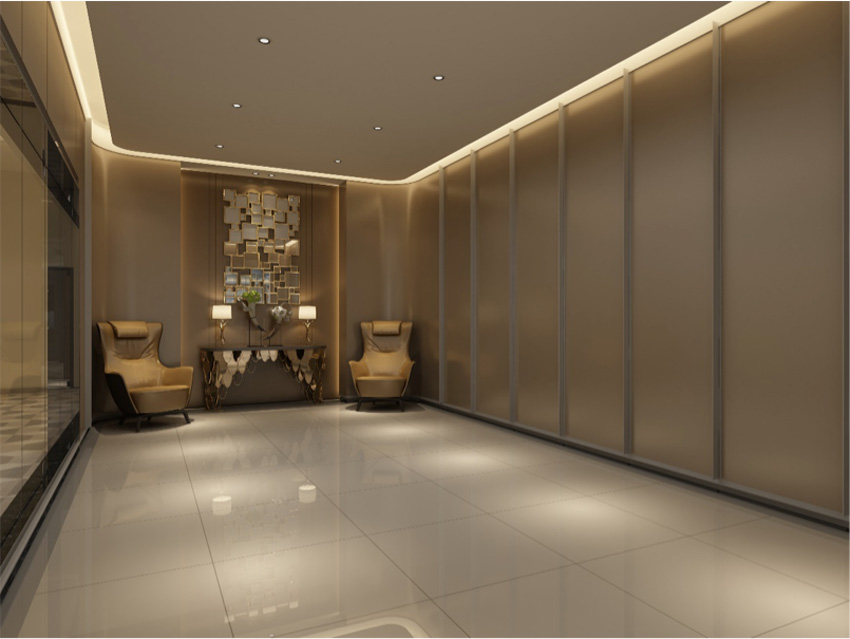Specifying Extruded Aluminum Trim for Drywall Surfaces in Multifamily Residential Projects
Extruded Aluminum Trim Design Trends to Enhance Drywall Surfaces in Multifamily Residential Projects
In addition to providing a wide range of modern, on-trend aesthetics that highlight cleaner details and distinctive corner profiles, extruded aluminum trim is a cost-effective, convenient, and timesaving alternative to using wood trim or fiber cement boards. All of these aspects can help designers achieve an upscale look for multifamily residential properties even if the project has a tight budget. This section will highlight different extruded aluminum trim design trends that can be used to enhance drywall surfaces in multifamily residential projects.

When used with drywall, extruded aluminum trim can make a big impact. Walls and surfaces can be turned into the feature or the focus and can highlight a well-designed space.
Reveals
One trend that easily can be used in a many different multifamily residential spaces is a minimalist wall with a contrasting recess as a feature. This look can be accomplished with reveals. Square reveals, for example, create a clean, aesthetically pleasing recess that is contrasted by projecting square details. This reveal can be installed vertically, horizontally, or diagonally, and it can be finished with clear anodized or a primed finish that can be powder coated with custom colors to match other design themes of the space.
A nice feature of this reveal—and of many other profiles—is that it can be used with different surfaces, including 5/8-inch drywall, panel installation, and wrapped surface finishes such as fabric or vinyl wall coverings. When used with drywall, the combination of the recess and the finished aluminum allows for a variety of different designs that maintain the sleek, modern look. This design easily can be combined with a wrapped surface, which can add to an apartment or condominium lobby, party room, or other space as a custom feature design that keeps costs low.
Bases
Earlier in the course, we discussed the benefits of traditional baseboards and mentioned that many designers are now questioning the value of those bases, especially in contemporary multifamily residential projects. One solution is to include extruded aluminum trim bases; these profiles protect the wall while providing a modern aesthetic to the spaces where they are used. For example, a reveal double flange creates a recessed base at the bottom of a wall just barely above the floor surface—or at the very top of the wall just below the ceiling. The double-flange profile creates a reveal for striking visual impact while protecting the bottom of the wall material and creating a lower recess. While other profiles can be used in vertical or diagonal designs, the double flange only can be used in horizontal designs. And, as with most other profiles, it comes in standard clear anodized or primed finish. There are anodized color and powder-coating finishes available for custom color matching, so designers have many options to meet their clients’ needs.
Base Shadow Line
Another base profile creates shadow lines with a minimalist approach. This trim makes the wall appear to float just above the floor surface and creates a similar effect at the top of the wall just below the ceiling. The profile can be used vertically or horizontally, and requires ridged facing if taping and floating are needed. As with many of the other profiles, it can be used with wrapped surfaces, and it is available with similar anodized clear or primed finishes. Anodized color and powder-coating finishes are available for projects that require custom color matching.
Corners: Corner Round
Corner profiles can work as a design feature for a space, and they dress up drywall. Corner rounds, for example, have a circular corner for vertical and horizontal drywall (such as fur-down applications) or panel corners. The corner round can be used with fabric or vinyl wrapped surfaces. The profile is made of 6063–T5 aluminum with standard clear anodized or primed finish, and there are anodized color and powder-coating finishes available for custom color matching.









